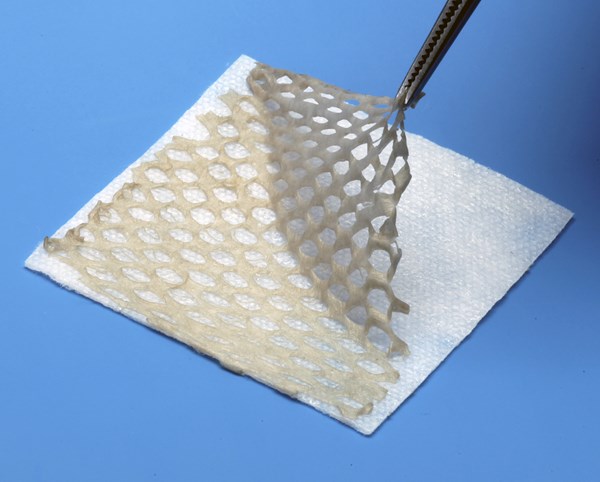I feel like I should start this blog like the beginning of Star Wars, “Long ago, in a galaxy far away…“ Back in 2013, when insurance was less complicated, the US Wound Registry provided data for a medical student project under the supervision of Dr. Adelaide Hebert, Department of Dermatology at the University of Texas Health Science Center, Houston. Medical student Tiffany Crenwelge analyzed the data. The goal was to evaluate whether payer status impacted the use of Cellular and/or Tissue Based Products (CTPs) in a selected group of wound centers.
We wanted to determine whether patients who had Medicare Fee For Service (FFS) PLUS a secondary insurance (to cover the 20% of cost not covered by Medicare) received CTPs at a different rate for chronic leg/foot ulcers than patients with Medicare ONLY, since the latter would have been responsible for 20% of the charges. We did not analyze data from patients with private insurance, because they were subject to complex prior authorization and a variety of out-of-pocket costs, or self-pay patients. De-identified data pertaining on patients with lower extremity ulcers was transferred to an Excel spreadsheet for analysis.
We used data from a consortium of 5 hospital-based outpatient wound centers closely grouped geographically in the northeastern USA and operated under the direction of a small wound management company which had a protocolized approach to leg/foot ulcer patients. Uniquely, all physicians were employees of the hospital and were compensated on a fixed salary. This removed any financial incentive to utilize interventions on the basis of their potential revenue generation for the physician. This seemed an ideal environment in which to evaluate whether insurance type affects patient treatment decisions for costly healthcare interventions like CTPs, which were then called “bioengineered skin.”
In 2013, the patient-responsible portion for a CTP application was approximately $350.
Data Overview
- Date range: 9/28/2011 – 12/31/2012
- Total leg/foot ulcer patients: 5,487
- Number of Diabetic Foot Ulcers (DFUs): 851
- Number of Venous Leg Ulcers (VLUs): 1,847
- Number of patients receiving CTPs: 169 (3% of total)
- % of CTP-treated patients with (Medicare + Secondary) (no copay): 36%
- % of CTP-treated patients with (Medicare ONLY) (patients would have been responsible for the 20% copay): 1.8%
- Only one patient each with a DFU or VLU underwent a CTP treatment if they had Medicare ONLY, without a secondary insurance.
Conclusions
This was a tiny study designed for a medical student to learn to analyze a problem. However, it appears to show that in a clinic setting with uniform practice patterns, among patients cared for by physicians on a straight salary, patients whose care was covered by Medicare ONLY (and who were responsible for their 20% co-pay), were much less likely to undergo treatment with a CTP than patients whose 20% copay was covered by a secondary payer. We do not know whether Medicare ONLY patients were less likely to be offered treatment, or whether they refused it for monetary reasons.
There has long been concern that payer status influences access to CTPs. This seems a valid area of concern since under an episode of care model, the total amount of the patient-responsible portion will dramatically increase.
The possible dirty secret list has gotten longer now that Medicare Advantage plans are deciding who gets treated and with what product (some of them just say “no”), and patient out-of-pocket is generally higher than ever and also highly variable. We never really talk about this issue.
Darlene Carey, Chief Operations Officer, Precision Healthcare, was instrumental in conducting the project.

Dr. Fife is a world renowned wound care physician dedicated to improving patient outcomes through quality driven care. Please visit my blog at CarolineFifeMD.com and my Youtube channel at https://www.youtube.com/c/carolinefifemd/videos
The opinions, comments, and content expressed or implied in my statements are solely my own and do not necessarily reflect the position or views of Intellicure or any of the boards on which I serve.




Dr. Fife,
Great topic and I am glad you are discussing it. In the 9 wound centers I worked with, I definitely noticed that patients with a financial obligation were often not even offered advanced therapies or medications. When the case would come up in monthly case review I was often told that the patient “wound not pay for it” although it seemed they weren’t given the choice. I agree the plan of care needs to fit the patient, but I also believe we should allow the patient to make the choice. I believe this also should be the case when dealing with private insurance. If the best care was offered and declined due to expense, then at least the patient knows the treatment they are getting isn’t our best but the most economical. Let patients deal with their complicated insurance companies. It is more likely that payer would listen to a patient over a provider or hospital. Thanks for the great info!